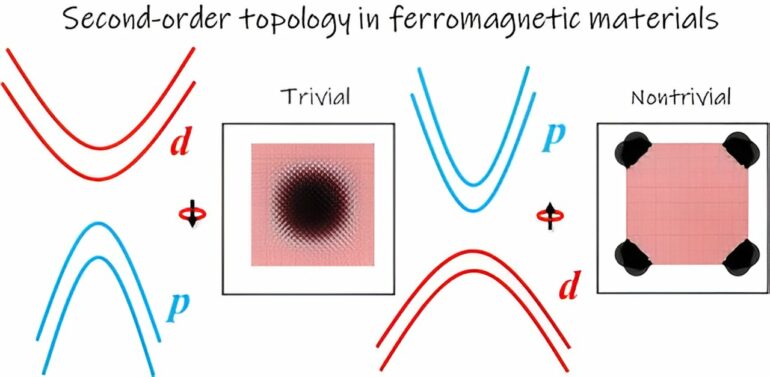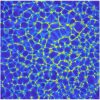Researchers from Monash University, part of the FLEET Center, have revealed a generic approach towards intrinsic magnetic second-order topological insulators. These materials are crucial for advancements in spintronics, an emerging field aiming at using spin degree of freedom to deliver information. Their study is published in Nano Letters.
Two-dimensional ferromagnetic semiconductors, such as CrI3, Cr2Ge2Te6, and VI3, have been extensively studied in recent years. These materials are fundamental to spintronics. Topological insulators are materials with unique properties where the interior is insulating, but the boundary can conduct electrons.
In three-dimensional topological insulators like Bi2Se3, the surface hosts two-dimensional Dirac fermions. Second-order topological insulators, a new concept extending the idea of topological insulators, exhibit (m-2)-dimensional boundary states in m-dimensional materials, such as one-dimensional hinge states in three-dimensional materials and zero-dimensional corner states in two-dimensional materials.
Intrinsic ferromagnetic semiconductors are typically strong correlated materials, characterized by strong electron-electron correlations. These interactions are so pronounced that there is rarely “electron communication” between adjacent atoms, resulting in a system that resembles an atomic insulator devoid of topological properties. Consequently, bridging these two states is challenging.
This research, led by Dr. Zhao Liu and Professor Nikhil Medhekar under FLEET THEME 1, found an elegant solution. They discovered that in some intrinsic ferromagnetic semiconductors, the p orbitals from the ligand anions and d orbitals from the metal cations can form an inverted orbital order.
Traditional ferromagnetic semiconductors have normal ordered p-d orbitals, i.e. p orbitals have a much lower energy than d orbitals, so p orbitals share a closed shell and work as a messenger in “delivering” super-exchange interactions between two metal cations with an open d shell.
However, when partial p orbitals have higher energy than all the d orbitals, an inverted p-d orbitals occurs. Since p and d orbitals share opposite parity, it is expected that inverted and normal ordered p-d orbitals give nontrivial and trivial topological phases, respectively.
Applying advanced density-functional theory calculations and wave function symmetry analysis, the researchers identified 1T-VS2 and CrAs monolayer as potential candidates of intrinsic magnetic second-order topological insulators. 1T-VS2 shares a hexagonal lattice, while CrAs monolayer has a square lattice. In both, the spin up channel shows inverted p-d orbitals, resulting in nontrivial topology, while the spin down channel possesses normal ordered p-d orbitals with trivial topology.
With 1T-VS2 nanoflakes grown into a hexagonal or triangular shape, CrAs into a square shape, spin-polarized scanning tunneling microscope can be used to detect these states, which localized at the corners only.
“Our work can be generalized to Kondo insulators, where d and f orbitals play similar roles to the p and d orbitals studied here. It would be exciting to discover second-order topological Kondo insulators considering that topological Kondo insulators have been recognized in this field,” said Professor Medhekar.
More information:
Zhao Liu et al, Generic Approach to Intrinsic Magnetic Second-Order Topological Insulators via Inverted p–d Orbitals, Nano Letters (2024). DOI: 10.1021/acs.nanolett.4c03109
Citation:
Fundamental spintronics research reveals generic approach to magnetic second-order topological insulators (2024, September 12)



